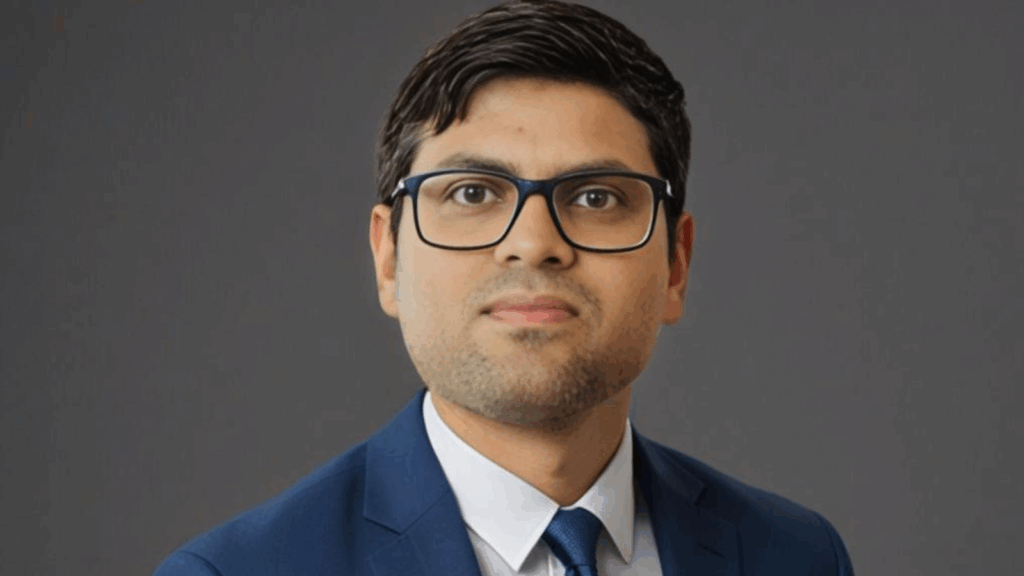Pradipta Kishore Chakrabarty: The data security & governance and cloud modernization expert who is building the banking sector’s future

Photo courtesy of Pradipta Kishore Chakrabarty.
Opinions expressed by Digital Journal contributors are their own.
In today’s rapidly evolving banking and financial landscape, addressing complex technological challenges requires precise and advanced tools. Pradipta Kishore Chakrabarty exemplifies the new breed of technology leaders adept at leveraging cutting-edge innovation while safeguarding security and compliance. Positioned at the intersection of artificial intelligence and cybersecurity, Chakrabarty pioneers the future of banking technology with a mission to enable secure innovation.
The building of secure innovation
Chakrabarty’s journey began at the Silicon Institute of Technology in Bhubaneswar, India, followed by 18 years of experience navigating diverse financial ecosystems across three continents—from the startup vigor of Mumbai and regulatory environments of Norway to the high-stakes operations on Wall Street. This global perspective has informed his mastery in balancing innovation with stringent security and regulatory demands.
His research and development work with petabyte-scale financial data has led to industry-leading AI solutions that enable banks and fintech firms to visualize and analyze complex transactional documents while maintaining compliance with global regulations. This work offers a framework for financial institutions seeking to harness AI responsibly, optimizing efficiency without compromising security or regulatory adherence.
“Leveraging emerging technologies such as Artificial Intelligence, this work involved the development of an industry-leading product for a fintech organization, enabling the visualization and analysis of diverse transactional documents for both public and private entities,” Chakrabarty explains, reflecting on his previous role where he handled petabyte-scale data while maintaining strict compliance with global regulations. This work has now become a blueprint for how financial institutions could harness AI without compromising security or regulatory standing.
Defending against an invisible enemy
One of the greatest challenges facing financial services today is mitigating the novel cyber risks introduced by autonomous AI systems. Chakrabarty’s research focuses on adversarial attacks against agentic AI—autonomous AI agents operating in critical areas such as fraud detection and customer service. His pioneering paper “Adversarial Attacks on Agentic AI Systems: Mechanisms, Impacts, and Defense Strategies” presents a comprehensive threat model and multilayered defense framework tailored to autonomous systems’ unique vulnerabilities.
Published in the International Journal of Science and Research, this paper has amassed over 300 reads on ResearchGate, a premier research indexing platform, highlighting its wide readership and influence. Being cited by other researchers worldwide reinforces the quality and impact of this work, underscoring Chakrabarty’s vital contribution to advancing cybersecurity strategies in AI-driven finance.
His second significant publication, “Causal Inference in Agentic AI: Bridging Explainability and Dynamic Decision Making,” addresses the critical challenge of enabling autonomous AI systems to explain their decisions in regulatory and operational contexts. This research introduces frameworks to enhance AI explainability—a regulatory imperative as well as a business necessity. Like the adversarial attacks paper, it has attracted extensive global interest and citations, validating its relevance and influence in the academic and technology communities.
Together, these contributions represent blueprints for defending financial institutions from invisible cyber adversaries while empowering them to innovate confidently. The acknowledgment of these papers by global researchers highlights Chakrabarty’s role as both a thought leader and a practical problem-solver.
“The techniques adopted in the published research papers leverage emerging agentic AI methodologies to propose novel architecture and techniques to solve complex business problems of cybersecurity and compliance in the regulated financial industry,” Chakrabarty notes. His published research papers, including “Self-Healing Multi-Agent Architectures for Continuous Regulatory Adaptation in the Financial Industry,” represent more than just mere academic exercises; they are practical blueprints for an industry under siege. Two of his papers (Adversarial Attacks on Agentic AI Systems: Mechanisms, Impacts, and Defense Strategies and Causal Inference in Agentic AI: Bridging Explainability and Dynamic Decision-making) were cited at least once by other researchers, lending credibility and validity to his contribution to the academic community and relevant subsequent studies on the topic.
Building the financial infrastructure of tomorrow
Beyond defense, Chakrabarty actively shapes the architectural future of financial institutions. As a lead architect at a major multinational financial group, he has driven firm-wide technology strategies and roadmaps that increased adoption of emerging technologies by 10% and reduced project waste by 12%, translating into millions of dollars in cost savings and accelerated innovation timelines.
His expertise extends to designing secure, compliant, and resilient multi-cloud architectures that avoid vendor lock-in and address complex data residency and regulatory requirements across AWS, Azure, and other cloud platforms. Additionally, his framework for integrating third-party SaaS vendors ensures operational security and compliance while addressing emerging ESG and accessibility concerns—key priorities for modern financial institutions.
The integration of third-party SaaS vendors into enterprise environments, which is what Chakrabarty calls his “holistic framework”, represents another frontier in financial technology. As banks increasingly rely on specialized software providers for everything from risk assessment to customer relationship management, ensuring these integrations meet security, compliance, and operational requirements becomes paramount. His framework addresses not just technical integration challenges but also emerging concerns around environmental, social, and governance (ESG) criteria and accessibility requirements.
Facing the future of finance tech with no fear
As the banking sector faces the dual imperatives of rapid digital transformation and mounting cyber threats, leaders like Pradipta Kishore Chakrabarty stand at the forefront, building a secure technological foundation for the future. His groundbreaking research, recognized and cited internationally by academic researchers and industry experts alike, validates both its scholarly and practical impact. By combining deep technical expertise with a global perspective and active engagement in peer review, Chakrabarty exemplifies the kind of visionary technologist essential for shaping the future of finance—where innovation and security go hand in hand to foster trust and growth in a complex, connected world.
This multifaceted expertise makes him not just a builder of systems but a guardian of global financial technology’s integrity and progress.
Pradipta Kishore Chakrabarty: The data security & governance and cloud modernization expert who is building the banking sector’s future
#Pradipta #Kishore #Chakrabarty #data #security #governance #cloud #modernization #expert #building #banking #sectors #future






